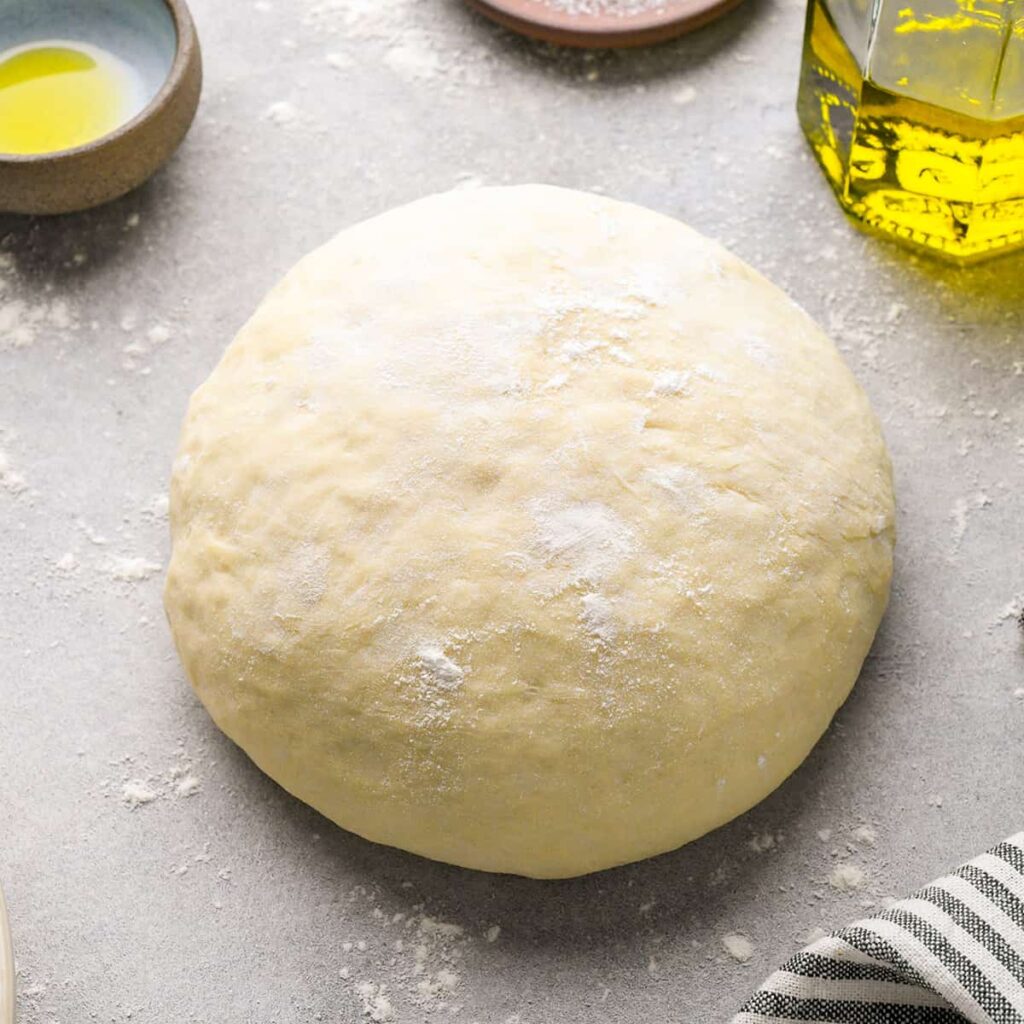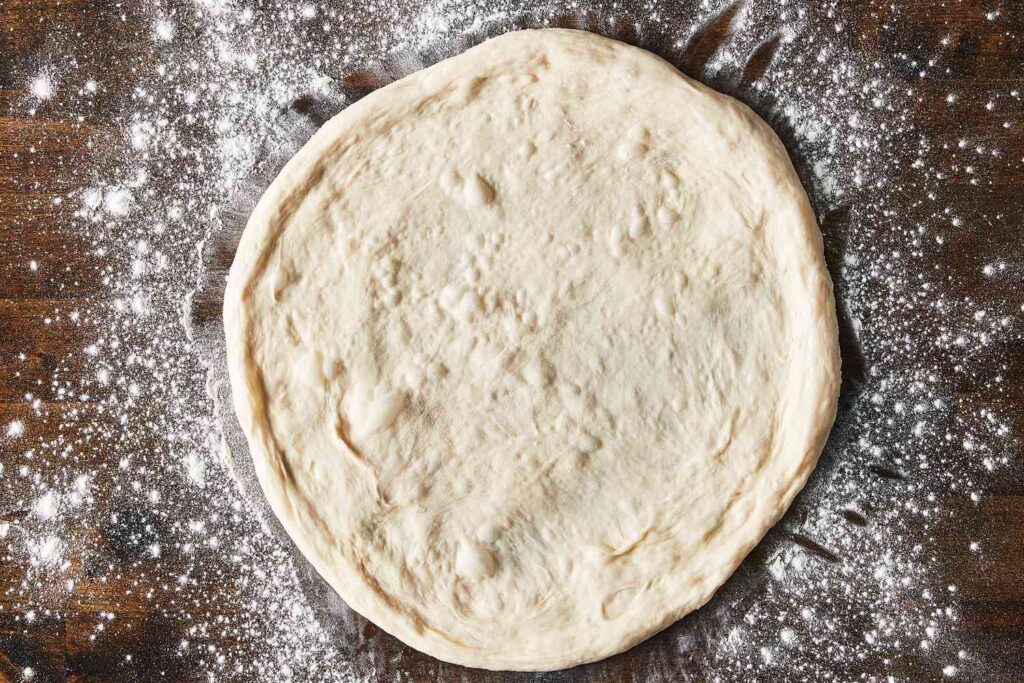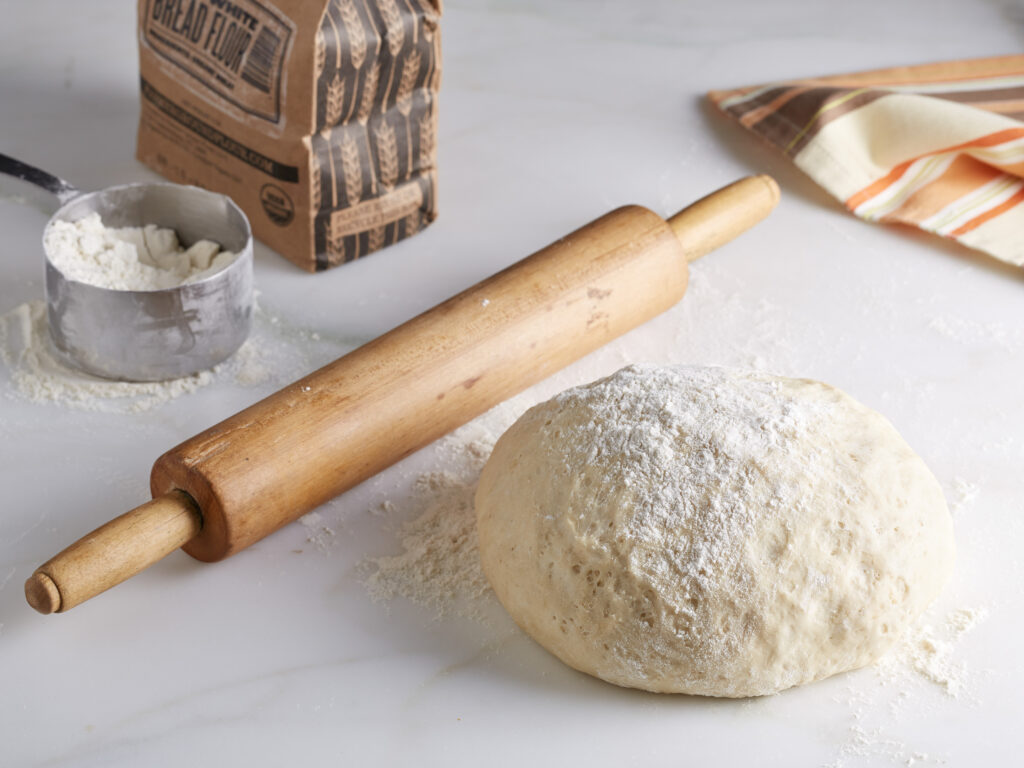There’s a wonderful feeling when you make homemade pizza dough. The smell of yeast, the feel of flour on your hands, and the anticipation of a hot, crispy, and tender crust are all wonderful stages. Whether you’re a beginner or a seasoned home cook, mastering pizza dough will add a distinctive touch.
In this comprehensive guide, we’ll walk through everything you need to know to make dough that rivals your favorite pizzeria’s — using simple ingredients and foolproof techniques.
Why Homemade Pizza Dough Is Worth It
In an age of convenience, you might wonder why anyone would go through the trouble of making their own pizza dough. The answer is simple: control, freshness, and taste.
Store-bought dough or frozen alternatives often contain preservatives, additives, or ingredients that compromise flavor. When you make your own, you control the texture, the rise, and the richness of flavor — from a slow-fermented sourdough style to a quick-rise weeknight version.
Plus, homemade pizza dough is incredibly cost-effective and can be frozen for later use, making it both a practical and rewarding kitchen skill.
Ingredients: Keep It Simple
One of the beautiful things about homemade pizza dough is that it only requires a handful of ingredients — all of which you probably already have in your pantry.
- Flour – All-purpose flour works well, but bread flour gives you a chewier, more elastic texture.
- Water – Preferably warm (100-110°F) to activate the yeast.
- Yeast – Active dry yeast or instant yeast both work.
- Salt – Enhances flavor and strengthens the gluten.
- Olive oil – Adds richness and improves texture (optional).
- Sugar or honey – Feeds the yeast and helps browning (also optional).
That’s it. The magic of homemade pizza dough lies not in complexity but in the care you put into the process.

Step-by-Step Recipe for Classic Homemade Pizza Dough
Let’s walk through a standard recipe that yields two 12-inch pizza crusts.
Ingredients:
- 3 ½ cups bread flour (or all-purpose)
- 1 ½ tsp salt
- 1 packet (2 ¼ tsp) active dry yeast
- 1 ¼ cups warm water
- 1 tbsp olive oil
- 1 tsp sugar
Instructions:
- Activate the Yeast: In a bowl, combine warm water, sugar, and yeast. Let it sit for 5–10 minutes until foamy.
- Mix the Dough: In a large bowl, mix the flour and salt. Add the yeast mixture and olive oil. Stir until a shaggy dough forms.
- Knead: Turn the dough out onto a floured surface and knead for about 8–10 minutes until smooth and elastic.
- First Rise: Place the dough in a lightly oiled bowl, cover with a damp towel or plastic wrap, and let it rise for 1–2 hours in a warm place until doubled in size.
- Divide and Rest: Punch down the dough, divide it in half, shape into balls, and let rest for another 15–30 minutes before stretching or rolling out.
- Shape and Bake: Preheat your oven to the highest setting (usually 475–500°F) with a pizza stone or steel if you have one. Stretch or roll out the dough, add your toppings, and bake for 8–12 minutes until golden and bubbly.
Congratulations — you just made authentic homemade pizza dough!
Pro Tips for Perfect Dough
1. Use a Kitchen Scale
Measuring ingredients by weight instead of volume ensures accuracy. Flour can be easily overpacked, leading to dry dough.
2. Hydration Matters
The water-to-flour ratio (called hydration) affects texture. A higher hydration (around 65–70%) gives you an airier, softer crust, while lower hydration yields a denser, crispier base.
3. Cold Fermentation for More Flavor
Want to take your homemade pizza dough to the next level? Let it ferment in the fridge for 24–72 hours. The slow fermentation process deepens the flavor and improves texture.
4. Don’t Overwork It
Too much kneading or handling can make the dough tough. Once it’s smooth and elastic, stop kneading. When shaping, be gentle to preserve air pockets.

Variations and Substitutions
Whole Wheat Homemade Pizza Dough
For a healthier twist, substitute up to 50% of the flour with whole wheat flour. It adds a nutty flavor and extra fiber.
Gluten-Free Dough
Use a gluten-free flour blend designed for baking, and add xanthan gum if it’s not already included. Note that texture and elasticity will differ.
No-Yeast Pizza Dough
In a pinch? Try a quick dough with baking powder. While it lacks the chewiness of traditional homemade pizza dough, it can be ready in under 30 minutes.
Troubleshooting Common Dough Issues
Dough isn’t rising?
Check that your yeast is active and water temperature is warm (but not hot). Expired or improperly stored yeast won’t rise properly.
Dough too sticky?
Add flour a tablespoon at a time during kneading. Be careful not to overdo it — sticky dough often bakes into a lighter, airier crust.
Dough too tough or dry?
You may have added too much flour or over-kneaded. Use a wetter dough next time and let it rest longer.
Storing and Freezing Homemade Pizza Dough
One of the best things about homemade pizza dough is that it freezes beautifully. After the first rise, divide it into portions, wrap tightly in plastic, and place in a freezer bag.
To use, thaw in the fridge overnight or on the counter for a few hours, then bring to room temperature before shaping.
You can also store dough in the refrigerator for up to 3 days. In fact, this slow fermentation method can dramatically improve flavor.
Pairing Your Dough with the Right Toppings
Now that you’ve perfected your homemade pizza dough, it’s time to talk toppings. The beauty of pizza is its versatility. Whether you love classic Margherita or spicy pepperoni with jalapeños, the foundation is the dough — so make it count.
Here are a few winning combinations:
- Margherita – Tomato sauce, mozzarella, fresh basil, drizzle of olive oil.
- Bianca – Olive oil, ricotta, mozzarella, garlic, and arugula.
- Veggie Lover – Red onion, mushrooms, bell peppers, olives, spinach.
The key is balance — don’t overload your dough, especially if you like a crispier base.
Why Homemade Always Wins
Ultimately, what makes homemade pizza dough so special is the love and intention behind it. Unlike mass-produced alternatives, your dough tells a story — one of time, care, and creativity.
When you bite into that crust and taste the layers of flavor developed through fermentation and hand-kneading, it’s clear that homemade pizza dough is more than just food. It’s an experience.
Final Thoughts
Homemade pizza dough may seem intimidating at first, but with a little patience and the right techniques, it becomes second nature. Whether you’re whipping up a quick weeknight dinner or hosting a weekend pizza party, the ability to craft your own dough is a skill worth mastering.
From simple ingredients to infinite topping possibilities, pizza starts with a solid foundation. So grab some flour, roll up your sleeves, and get ready to make pizza night unforgettable — one homemade pizza dough at a time.

